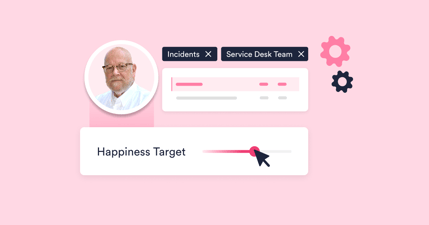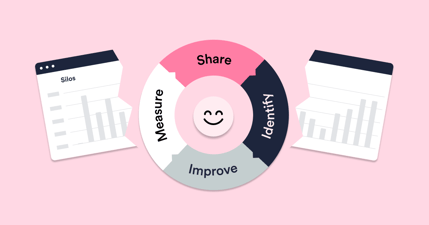If you ask ten people the question, "What is Digital Transformation?" you'll likely get more than ten answers. Each person will give you a definition and then pause to qualify or add to it. It's a tricky concept to pin down.
Those of us who have spent career time in IT have a habit of thought that starts with technology, so we're likely to give an answer that includes things like:
- Artificial Intelligence (AI) and Machine Learning
- Elimination of legacy systems and technical debt
- Reducing manual tasks and procedures
- Optimizing for "mobile-first."
While all of these may be parts of a Digital Transformation, none by itself is a workable definition. Part of what makes defining the term difficult is the word order: Digital comes first; therefore, we tend to consider it the more important word. In fact, it's Transformation that is the more important word of the two, and we mean a business transformation enabled by digital technologies.
IT Experience Management—ITXM™—can help provide the insights we need to identify specific opportunities for improvement and change in how digital technologies support and enable organizations to work, accomplish goals, and provide value to customers.
The ITXM™ Framework consists of four components: Measure, Share, Identify, and Improve. These components become a continuous cycle which in turn becomes the basis for continual improvement.
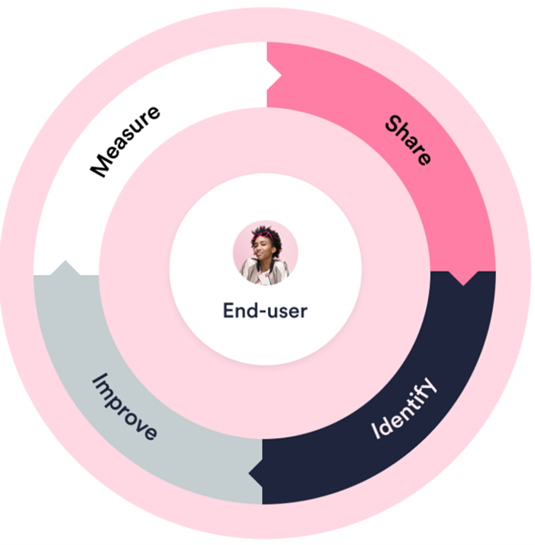
To learn more about how this works, the full description can be found here.
Experience Management Has Transformed Organizational Change
If, as we say, Digital Transformation is primarily business transformation, then disruption and fundamental change must happen at scale inside the organization. No one has to tell us that it's challenging to successfully accomplish organizational change. There are many books and classes on various ways to make change happen, and they all include information about resistance to change and the reasons for it.
But there's something else: Almost every discussion of organizational change talks about driving change, which implies that force is necessary to overcome resistance. That resistance was negligible in the big move to remote work in 2020—later bridging to the hybrid ways of working we see now—which is why the massive changes in our work could happen so rapidly. The most significant factor in the speed and thoroughness of these changes was necessity. Businesses had to comply with lockdowns, but people wanted and needed to keep working despite disruption and they found some creative ways to do it. Breakfast nooks and bedrooms became offices. Children and pets showed up in meetings. Work hours became far more flexible in many cases.
This in itself is transformational: Change is being pulled by new ways of working as well as driven by organizational needs. Employees want (and need) to change the way they work and the tools they use to accomplish that work. By measuring their experience and responding to the data, organizations have made decisions that moved them along the Digital Transformation journey.
While Digital Transformation is all about business, the changes are enabled by digital capabilities. The digital means by which business is done
- Cloud-based tools have replaced—and continue to replace—tools housed in organizations’ data centers
- Digital identity management tools have made it easier for employees to access applications and storage
- Employees have adopted digital collaboration as a way of working, cutting through the need to schedule conference rooms and face-to-face meetings
Employee Experience, and specifically ITXM, is helping accomplish what years of tossing around ideas like "work from anywhere" had not. Business is—being transformed, and modern digital tools are enabling the transformation.
In the major and rapid shifts of 2020, many IT departments became heroes by rapidly providing the tools and equipment necessary to keep operations going when offices had to close. This is reflected in the increases in end-user happiness with IT's handling of incidents and requests, as shown in the Global IT Experience Benchmark Report for H1/2021.
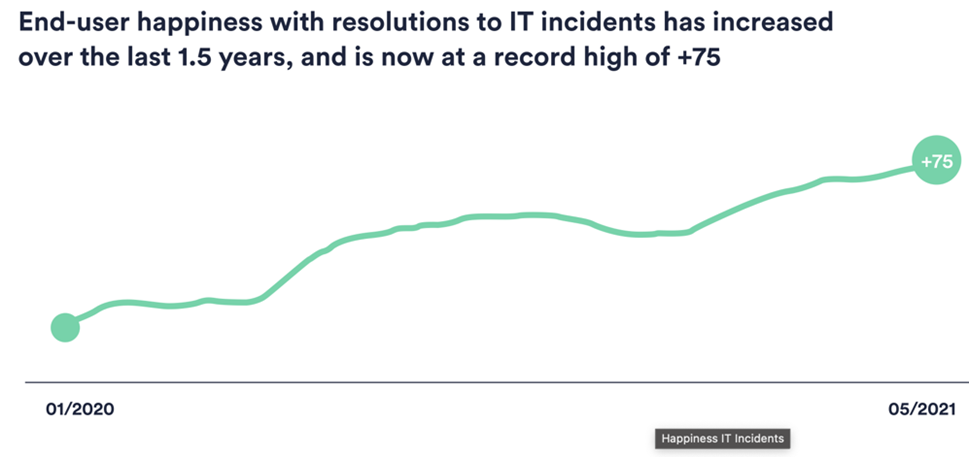
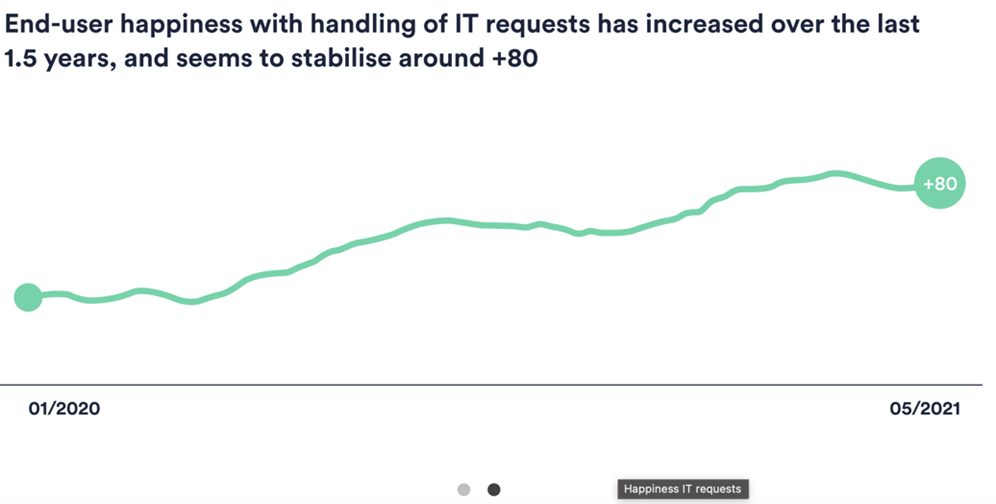
To put it another way, this is proof that IT succeeds when it provides for the real needs of the workforce, and the real needs of the workforce can best be discovered by asking employees what is working, what is not working, and what needs improvement. ITXM helps identify and clarify pain points and priorities.
Of course, the transformation didn't stop with people being able to work remotely or in hybrid home-and-office environments. Those newly flexible workdays—to which employees have become attached—required new tools to handle workforce management in environments like contact centers where people were splitting shifts or even bidding for specific work hours.
These changes are not in any way complete or finished; the nature of transformation, digital or otherwise, is that it is continuous. Constant change is an integral part of it. To quote three of the eight tenets of the Digital Transformation Manifesto:
- We proactively embrace change
- We have the agility to pivot quickly
- The customer and stakeholder experience is at our core
Given the opportunity to provide frequent feedback, our end-users will tell us what they need, what is working and not, and that knowledge can provide the impetus for improvement and innovation. Collaboration with IT is rated highest (+84) of any measured areas, according to the Global IT Experience Benchmark Report H2/2022. To put it another way, collaborating with IT makes end-users happy.

Summing Up
- Digital Transformation is a business transformation
- Powerful digital technologies enable new ways of doing business
- Transformation implies fundamental and continual change
- Change can be rapid when the need is real
- End-users can help identify opportunities for change and improvement
ITXM fits very well into the world of Digital Transformation, helping organizations respond quickly to employee needs and the impetus for new ways of working. One of the tenets of the Digital Transformation Manifesto says, "Our decisions are driven by data." ITXM, through its component stages of Measure and Share can then help Identify and Improve using data to move business transformation forward.
